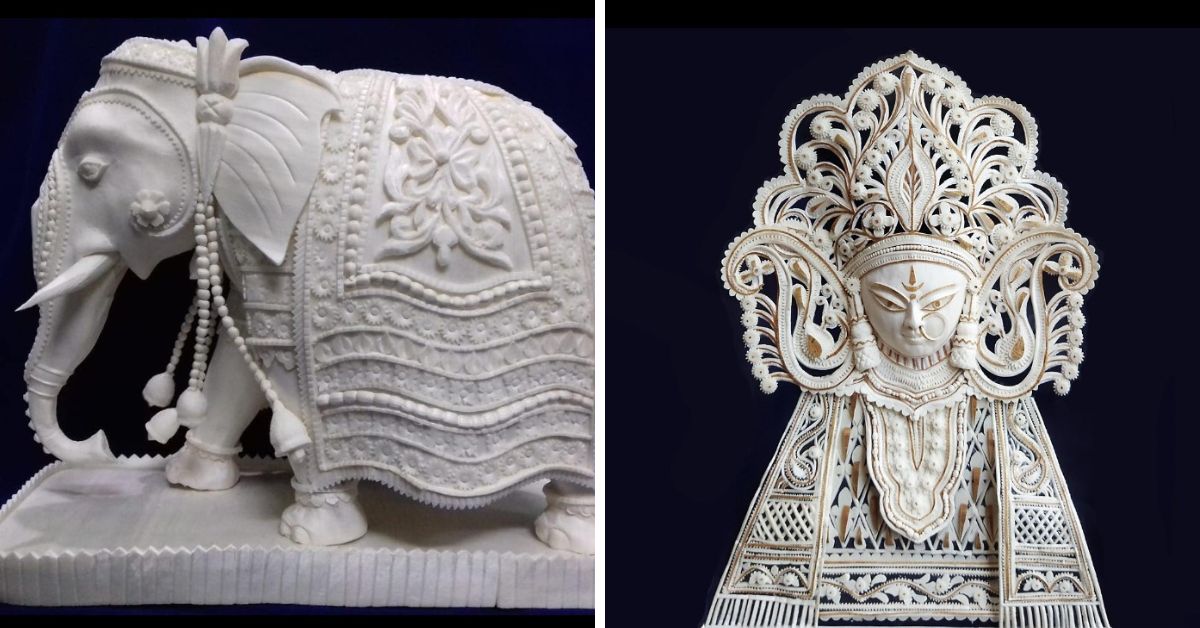How India’s Centuries-Old Eco-Friendly Alternative to Thermocol is Found & Used
White, lightweight, and sustainable, Indian cork or sholapith is a natural raw material available in West Bengal and Odisha. Here’s how it is used as a sustainable alternative to thermocol.

While most of us are familiar with thermocol, a material used to make decorative pieces and headgear, few know about its eco-friendly alternative – the Indian cork or sholapith.
Sholapith is a plant widely seen in the Sunderbans delta during the monsoon. Cultivators from West Bengal go knee-deep into the water, pluck the plant, clean the stalks and dry them under the sun.
The brown outer layer formed around the stalks is removed and the remaining material is sliced and then rolled. This can be converted into any form to suit the artist’s creativity.
A wide group of artisans from West Bengal are involved in the making of beautiful handicrafts using sholapith. The artisans who have been involved in this tradition for generations are called malakars.
Sholapith is considered to be a sacred material and is widely used in auspicious occasions and traditional rituals. There are many local folklores that connect this naturally occurring white material to the divine.
This lightweight material is hence used to create the traditional wedding headgear of a Bengali bride and groom in West Bengal. It is also used to decorate the idols of Puri Jagannath in Orissa and to adorn the goddess during Durga Puja celebrations in West Bengal.
The material majorly created in the districts of Bardhaman, Murshidabad, Nadia, Birbhum, Malda, and Hooghly is also exported to several countries.
While thermocol still remains a popular item, it is non-biodegradable. Whereas sholapith, a sustainable raw material, is rarely used even in the places where it is abundantly grown. And since this cheap material earns them very little, most artisans are switching jobs.
Watch this video to know more about this white porous material:
Edited by Pranita Bhat
If you found our stories insightful, informative, or even just enjoyable, we invite you to consider making a voluntary payment to support the work we do at The Better India. Your contribution helps us continue producing quality content that educates, inspires, and drives positive change. Choose one of the payment options below for your contribution- By paying for the stories you value, you directly contribute to sustaining our efforts focused on making a difference in the world. Together, let’s ensure that impactful stories continue to be told and shared, enriching lives and communities alike. Thank you for your support. Here are some frequently asked questions you might find helpful to know why you are contributing?

This story made me
-
97
-
121
-
89
-
167













